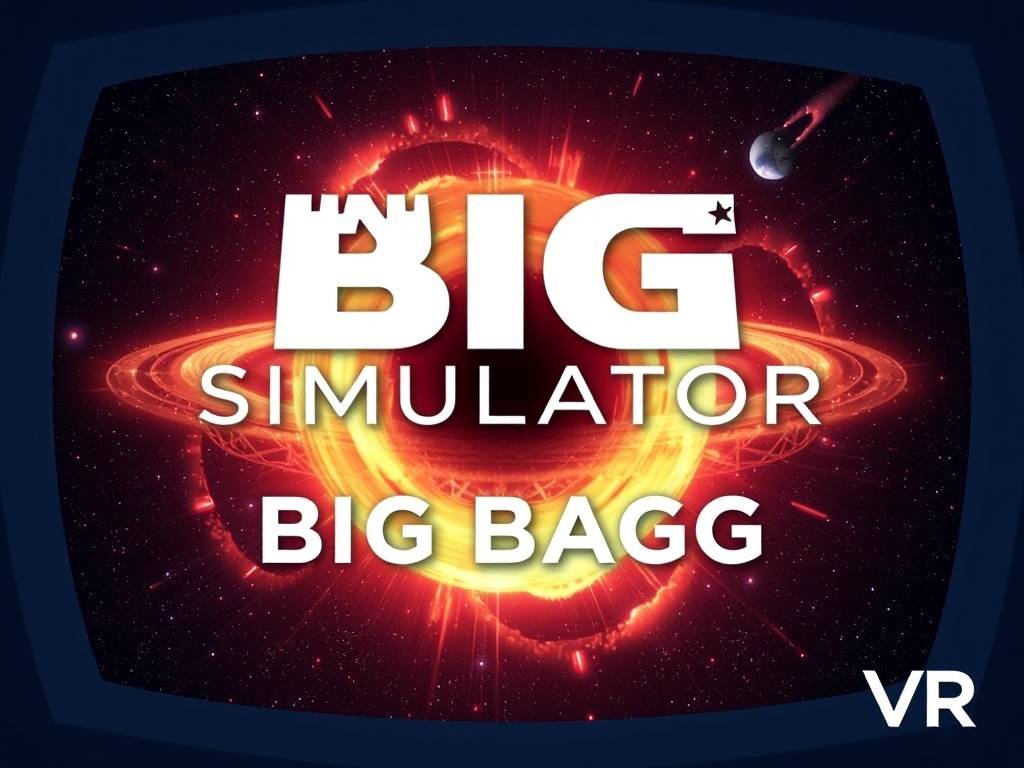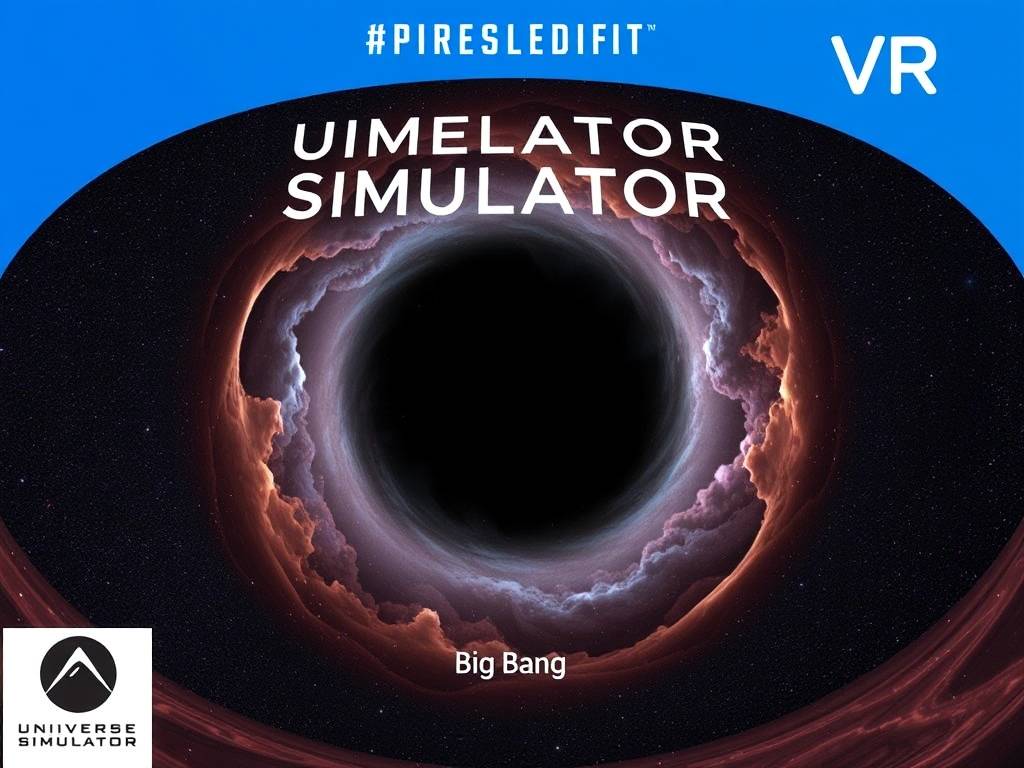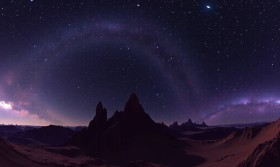Cosmic Genesis: Exploring the 'Big Bang DLC' for Universe Simulator VR

Have you ever stared up at the night sky, your mind reeling with that most profound and ancient of questions: "Where did all of this come from?" For centuries, we've sought the answer in mythology, in philosophy, and finally, in science. The Big Bang theory stands as our most powerful explanation, a majestic narrative of cosmic birth. Yet, for most of us, it remains an abstract concept—a graph, an equation, a faint whisper of microwave radiation. What if you could witness it? Not just watch a documentary, but stand at the very epicenter of creation, to feel the fabric of reality tear and re-weave itself around you? This is no longer a question for the imagination. Welcome to the groundbreaking new expansion for the acclaimed Universe Simulator VR: the Big Bang DLC.
This isn't just an update; it's a portal to the first moments of everything. The Big Bang DLC transforms your virtual reality headset into a time machine, plunging you into the most extreme conditions the universe has ever known. The core objective of this VR cosmology experience is to demystify the origins of our cosmos through an unparalleled interactive cosmic evolution journey. Forget dry textbooks; here, you are not a passive observer but an active participant in the genesis of spacetime.

Your experience begins not with a bang, but with a question. The Universe Simulator VR interface, familiar to veteran cosmic architects, now presents a new, primordial option. Upon selecting the Big Bang DLC, you find yourself in a featureless, infinite void. It’s a disorienting, profound stillness. This is the singularity—or as close as our current physics can speculate. Then, a prompt appears, inviting you to initiate the sequence. This is where the magic of procedural universe generation meets the established laws of physics. You are about to trigger the ultimate cosmic origins simulation.
With a pull of the virtual trigger, it begins. It’s not an explosion in space, but an explosion of space itself. The visuals and haptic feedback are carefully calibrated to be both awe-inspiring and educational. You feel a deep, sub-bass rumble as space-time expands at an unimaginable rate during the period of cosmic inflation. Energy, pure and undifferentiated, floods your view. This is the first critical phase that the DLC masterfully illustrates, addressing the common query: "What did the Big Bang actually look like?" It was a flash of light, but light itself was trapped in a dense plasma soup. The simulation visually represents this as a brilliant, opaque fog, allowing you to grasp why the early universe was not transparent.
As the simulation progresses through the first few minutes, you witness the universe cool just enough for the first subatomic particles to form. This is nucleosynthesis, and the DLC provides a hands-on physics simulation tool. You can literally reach out and manipulate the density and temperature sliders, observing in real-time how these changes affect the formation of hydrogen and helium. Tweak the conditions slightly, and you might create a universe devoid of the necessary elements for life. This interactive cosmic evolution feature brilliantly answers "why the early universe had the specific composition it did." It turns abstract constants into tangible, adjustable parameters, fostering a deep, intuitive understanding.
A pivotal, breathtaking moment occurs about 380,000 years after the initial singularity. The universe has cooled sufficiently for electrons to combine with nuclei, forming neutral atoms. In an instant, the fog clears. Photons, once trapped, are suddenly set free. This is the release of the Cosmic Microwave Background (CMB) radiation. In the Universe Simulator VR, you are bathed in this first light of creation. The VR cosmology experience allows you to "see" the CMB as a brilliant, all-encompassing glow that slowly redshifts before your eyes, deepening into the microwave background we detect today. It’s a visceral connection to the most ancient light in existence.
But the journey doesn't stop there. The Big Bang DLC is more than a spectacular light show; it's a robust scientific visualization tool. A dedicated "Data Stream" panel allows you to monitor everything from the quark-gluon plasma transition to the precise ratios of light elements being forged. For students and enthusiasts, this transforms complex data into an intuitive, visual narrative. You're not just learning that deuterium formed; you're seeing how and when it formed, contextualized within the grand, unfolding timeline.
One of the most innovative features is the "Cosmic Forge" mode. After experiencing the standard model of the Big Bang, you are granted the ability to re-run the simulation with modified fundamental constants. What if the gravitational constant were stronger? What if the weak nuclear force were slightly different? This procedural universe generation system lets you explore these "what-if" scenarios, leading to universes that collapse back on themselves instantly, or ones that expand so rapidly no galaxies ever form. It’s a powerful demonstration of the fine-tuning of our own cosmos, making the Big Bang DLC an invaluable tool for understanding the anthropic principle.
The expansion seamlessly integrates with the base game of Universe Simulator VR. Once the initial violent phases subside and the first stable atoms exist, you can seamlessly switch to the standard simulator mode. Now, you can fast-forward millions of years and watch the primordial gas clouds you just helped create coalesce under gravity, forming the first stars and galaxies. This end-to-end interactive cosmic evolution—from a hot, dense state to a universe teeming with galactic structures—is what sets this experience apart. It solves the user's desire for a complete, continuous story of the cosmos, from its first femtosecond to its present-day grandeur.
Ultimately, the Big Bang DLC for Universe Simulator VR achieves something remarkable. It takes the most monumental event in the history of everything and makes it personal, comprehensible, and profoundly beautiful. It answers not just the "what" and "when," but the "how" and "why." It’s a hands-on physics simulation that feels more like a form of digital poetry. By allowing you to stand at the dawn of time and guide the forces of creation, it doesn't just teach you about the universe's origins; it makes you feel a part of them. So, strap on your headset, take a deep breath, and prepare to initiate the sequence. The story of everything is waiting for you to press play.

















